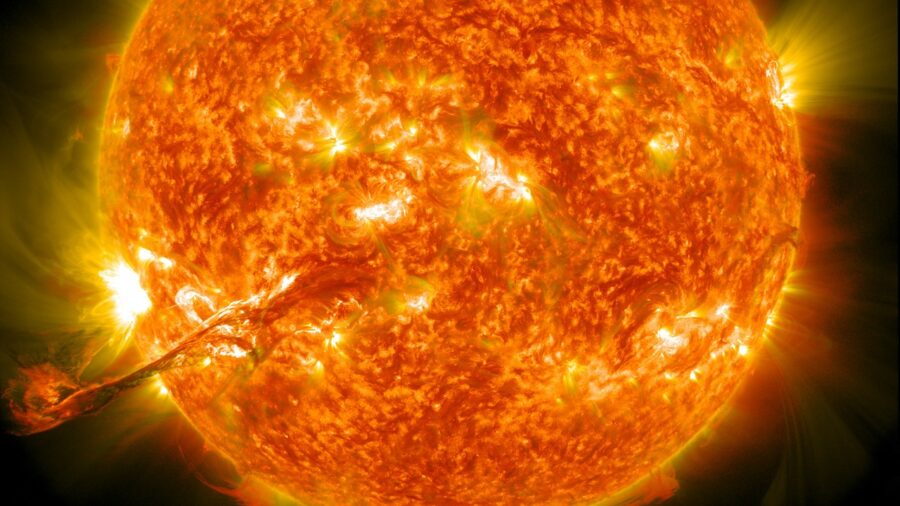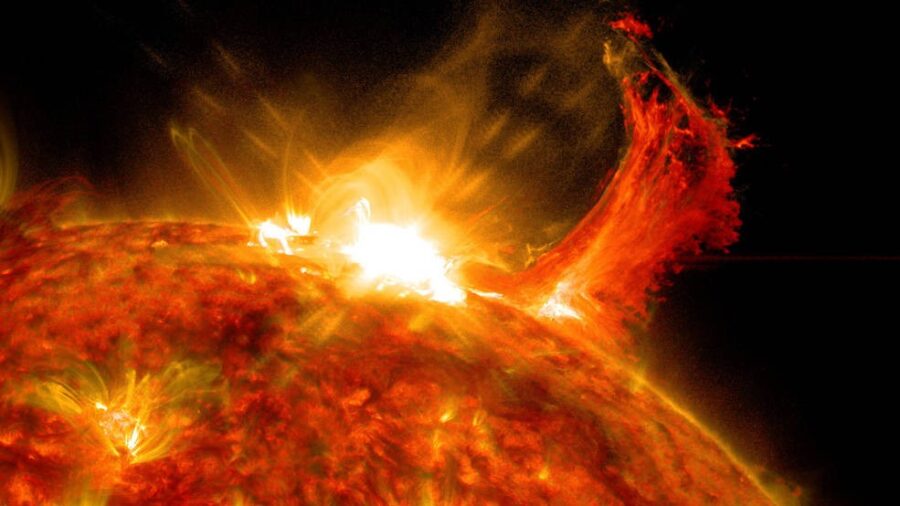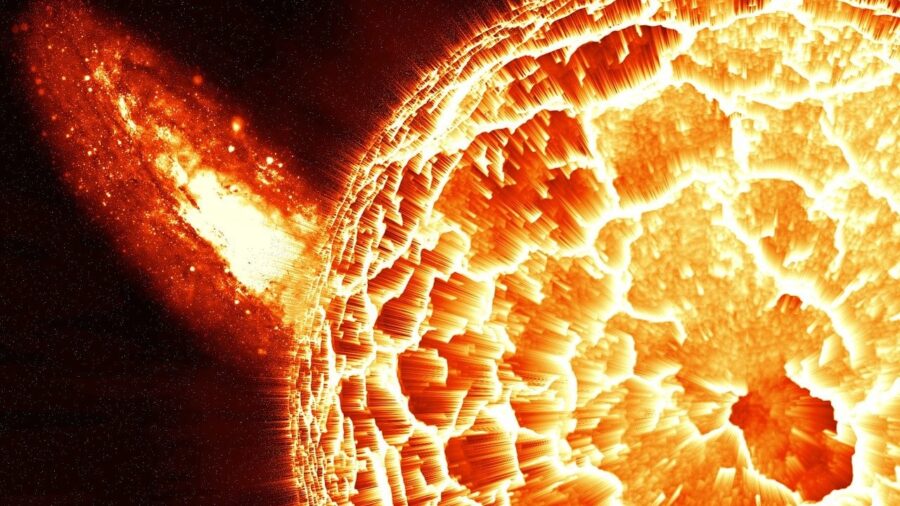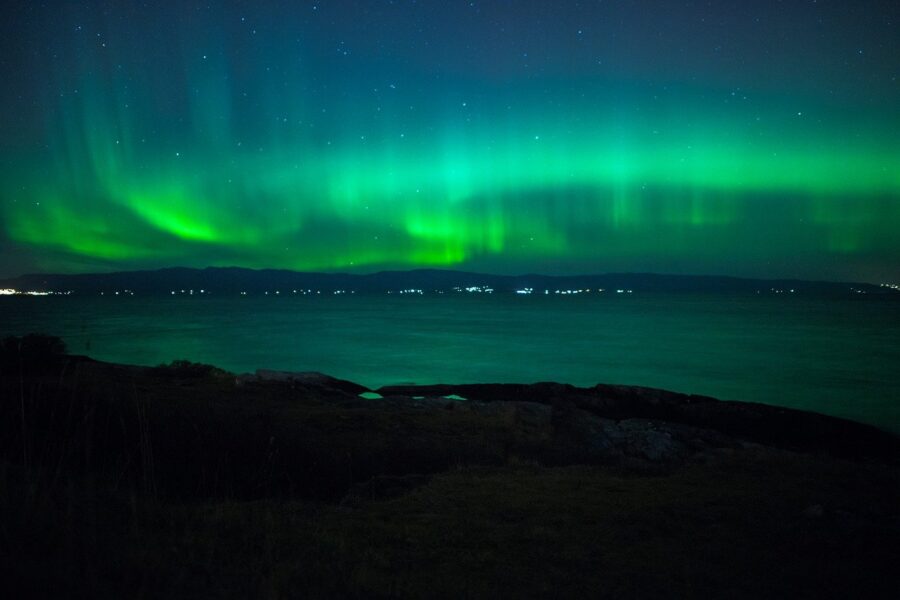Solar Flare Hits Terrifying Record Size

It’s an awe-inspiring eventuality, as spectacular as it is concerning: the Sun has unleashed an X8.7 solar flare, the largest yet recorded in the current 11-year solar cycle. Experts observe this monumental, record-setting event blazing from the active sunspot region, Region 3664. Recent solar activity there has also led to dramatic instances of related weather weirdness, including the dazzling array of Northern Lights gracing skies last week.
The X-Class

Scientists file flares from the Sun under a category called X-class, which represents the most intense variety of solar discharges. Like hurricanes and other similarly awe-inspiring (and terrifying) weather phenomena, the number following the “X” indicates the flare’s strength.
Thus, an X8.7 solar flare is no joke, embodying a significant, rare event.
Documenting the unprecedented activity, The Space Weather Prediction Center (SWPC) outlined how the region from which it emerged, 3664, has produced many prior X-ray flares.
Potential Dangers

The SWPC confirmed the historic news: the flare in question, progressing past the Western solar limb, is doubtlessly the most humongous of this solar cycle.
Thankfully, this enormous flare was not aimed at Earth, sparing us the sci-fi disaster movie that might have resulted. Make no mistake: intense geomagnetic storms or wide-scale communication disruptions could have resulted if the flare shot across the solar system and into our Pale Blue Dot. That being said, the solar flare did briefly degrade high-frequency radio signals on the side of our planet, at the time, facing the Sun.
Scientists Were Prepared… Sort Of

For context, and more meaningfully, the flare is not a singular event, a lone wolf anomaly. Rather, it follows closely on the heels of two prior significant flares in the X class (as SWPC noted): X1.7 and X1.2, both erupting from the Sun not long before the massive X8.7 flare. However, as their numerical categorizations indicate, neither of these flares even remotely approached the X8.7 solar flare, which shocked observers.
Nor was this gigantic flare, given its sheer size and scope, utterly a surprise. In the days preceding its monumental eruption, the ever-watchful SWPC issued a G2 Geomagnetic Storm Watch warning, calibrated as “moderate.” This warning cautiously anticipated a coronal mass ejection—for non-scientists, an eruption of solar material—that might noticeably increase overall geomagnetic activity on Earth.
But his moderate forecast proved far too mild, as the eventual solar flare ascended robustly to the G5 “extreme” level, thus demonstrating its own gargantuan intensity, alongside the overall recent intensity of solar activity.
The Northern Lights

On a more aesthetic level, this surge in solar activity of late has led to some of the most photogenic and widespread displays of the Northern Lights in decades. Due to the massive size of the recent solar eruptions, the light show didn’t confine itself to the North but extended as far south as Florida and Texas. The lights spurred by solar flares even reached parts of Northern Mexico.
Across the globe, those gazing upward were dazzled by the brilliant shades of green, pink, purple, and red, constituting a visual feast for anyone lucky enough to witness it.
The Most Vivid Display In Decades

Otherwise referred to as aurora borealis, the phenomenon is caused by electrically charged particles from the Sun fusing with gases pervading the Earth’s atmosphere. Last week’s stunning light show was the most vivid since 2003; that incarnation was coupled with a geomagnetic storm briefly taking out power in Sweden and even damaging electrical transformers in South Africa.
Thankfully, this latest massive solar flare failed to impact our electrical grid very much.












